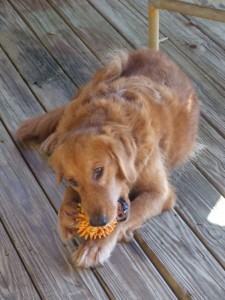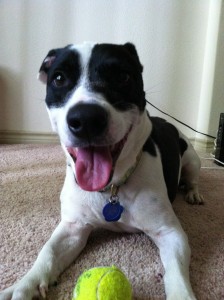COUNTER SURFING & what to do about it
 As we’ve mentioned, dogs (and all learners) will do what is most reinforcing. Often times something of interest is left in plain view/smell on a countertop or table and a dog will attempt to or actually get said object. Prior to this happening, as with all behaviors, we will want to employ a management strategy while training what we DO want the dog to do.
As we’ve mentioned, dogs (and all learners) will do what is most reinforcing. Often times something of interest is left in plain view/smell on a countertop or table and a dog will attempt to or actually get said object. Prior to this happening, as with all behaviors, we will want to employ a management strategy while training what we DO want the dog to do.
Your system of management should begin before the problem starts. This means that right from when your dog comes through your door for the first time, you are conscious and conscientious about where and what things are on counters and surfaces within reach of your pup.
You have probably heard a variety of suggests for solving this type of problem from saying the word “No!” to using spray bottles, to having things topple on the dog, to startling them via electronic devices. I urge you to use none of these methods as, while all are aversive and/or punishing to some degree they all thus have the abiltiy to come with unwanted side effects (apathy, escape-avoidance, generalized fear, & aggression). Hence, using one of the above methods can actually create new problems in addition to your snatch and grab issue.
Instead, I suggest the following. First, as mentioned above, manage the situation whilst training. Keep counters clear (even of crumbs) and food items away and things not meant to be explored via doggy mouths, safely unavailable. The reason that this first step is so very important is that the adage, “practice makes perfect” can be said to be true for behaviors that we like as well as those that we don’t wish to see repeated. Hence, allowing the dog to have some practice at scarfing items from counters and tables begins to establish this reinforcing behavior. Which, is then more difficult to change.
A clever metaphor for this situation described by Kiki Yablon is that if when you went to take out the garbage you found a $50 bill in the trash can, you might think to look in the can again the next day. If you found another $50 bill in the can you might almost look forward to taking a peek in the bin the next day. If the following day there was nothing, however a week later, there was another $50 bill, it’s likely you may continue checking for a while to come! Basically, all this is to say that if the “chance” of reinforcement exists (perhaps based upon previous experience), than it’s more difficult to convince the dog that some different behavior (not sneaking things off of counters/table tops) is more reinforcing.
On to step two. In addition to prevention via management, you will want to actively work on training other behaviors that you like better (than counter surfing) and that are possibly incompatible (not physically able to be completed at the same time).
Examples of such trainable behaviors are “settle” (teaching your pup to settle on a mat), “sit” (teaching your pup that “sitting” is MUCH more reinforcing than counter surfing), “find it” (on the floor!) whereby your pup learns to look for “good things” on the floor (that you have put there) so that he associates the floor (not the counters) with yummy/fun items.
If you have an “oops” moment & management fails, never run after the dog. A fun game of “chase” is reinforcing and the behavior will likely be repeated! Instead, run in the other direction or entice your dog to come to you with a “trade up” (something that your dog will consider “better value” than what he’s currently got in his mouth. On this note, you never want to just “take” something away from your dog, but rather, you always want to do a trade-up to exchange something that the dog has and that you want. Too, trade-ups must have a bigger value for the dog than the item that he’s currently in position of, so keep in mind what your dog considers a “big value” treat or toy!
Finally, always remember that behaviors that are reinforced will become stronger and be repeated. So, if you notice your dog sitting or relaxing nicely, be sure to reinforce that behavior! Toss some favorite treats their way. Don’t wait until your dog does something that you don’t like, but rather, watch for ways that you can “catch” your dog doing something that you do like & reinforce the heck out of it. You’ll be happier and your dog will, too!

